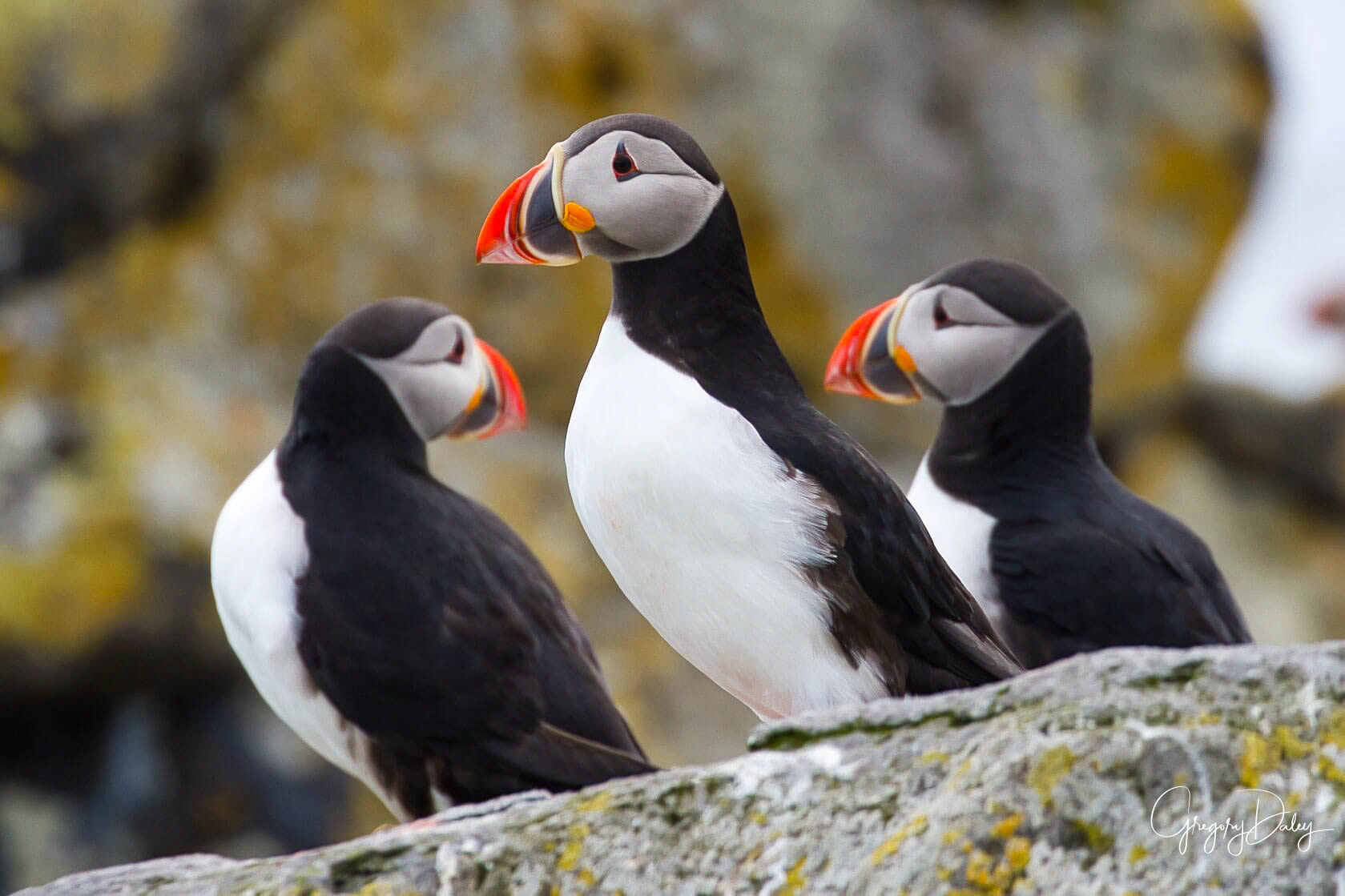
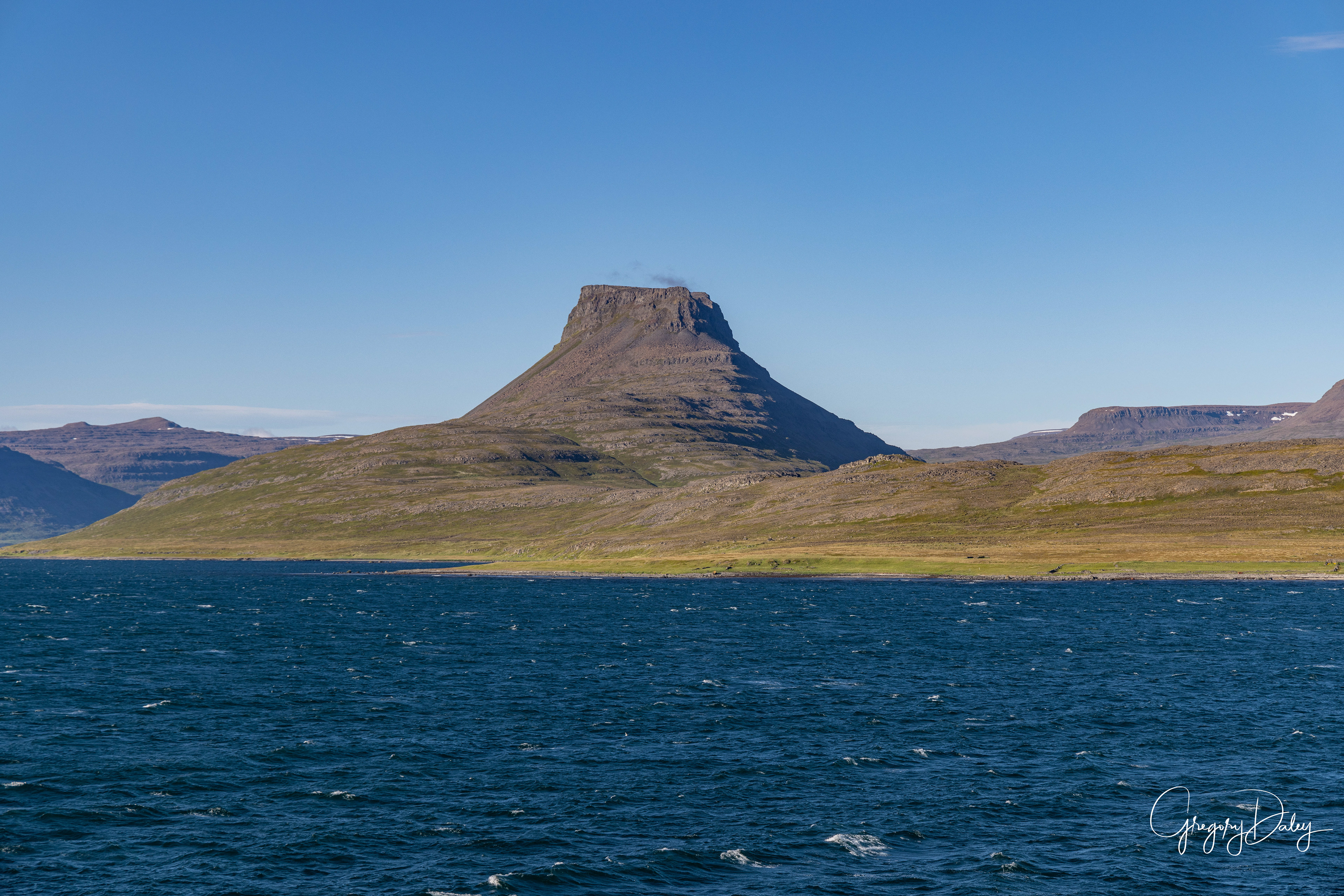
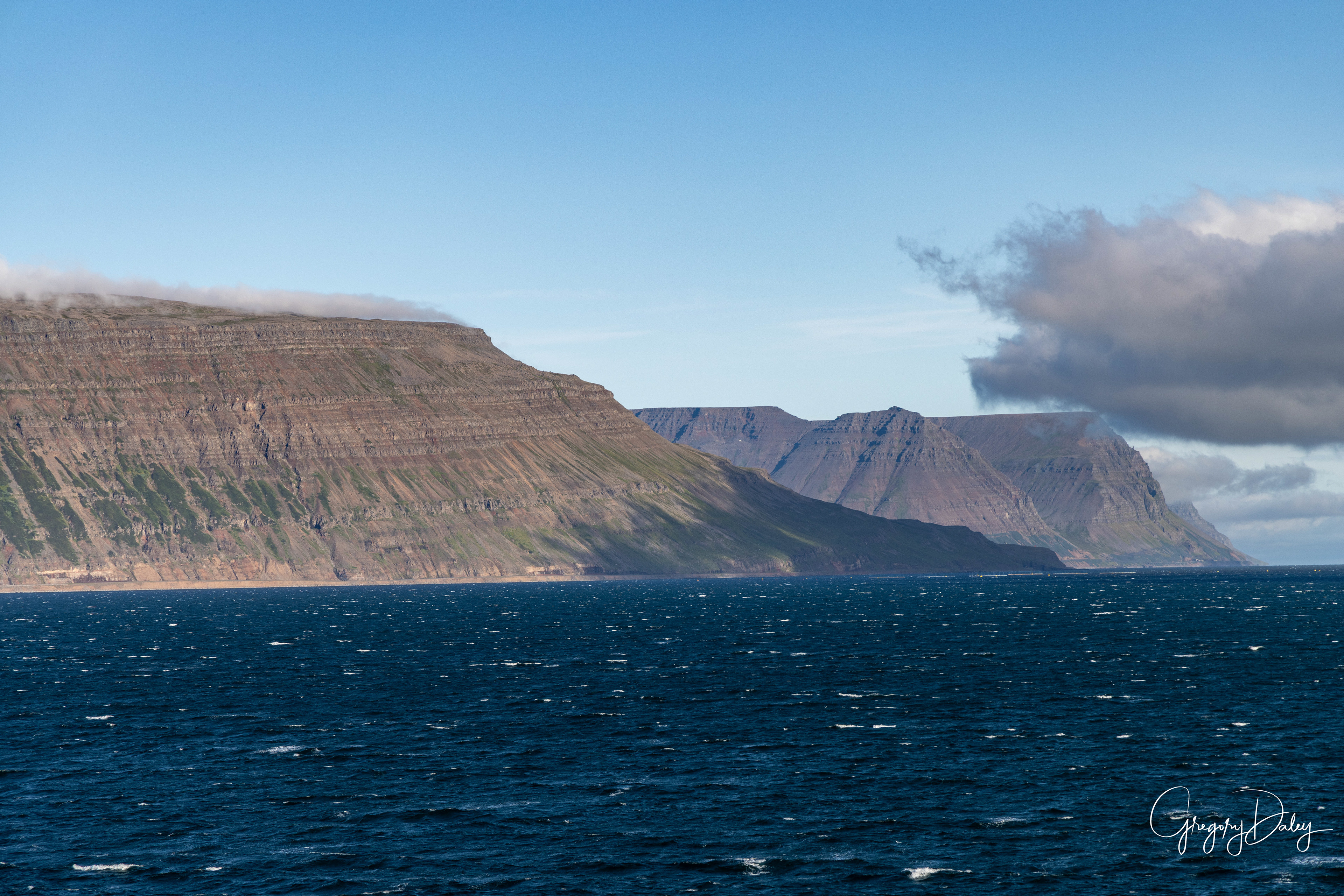
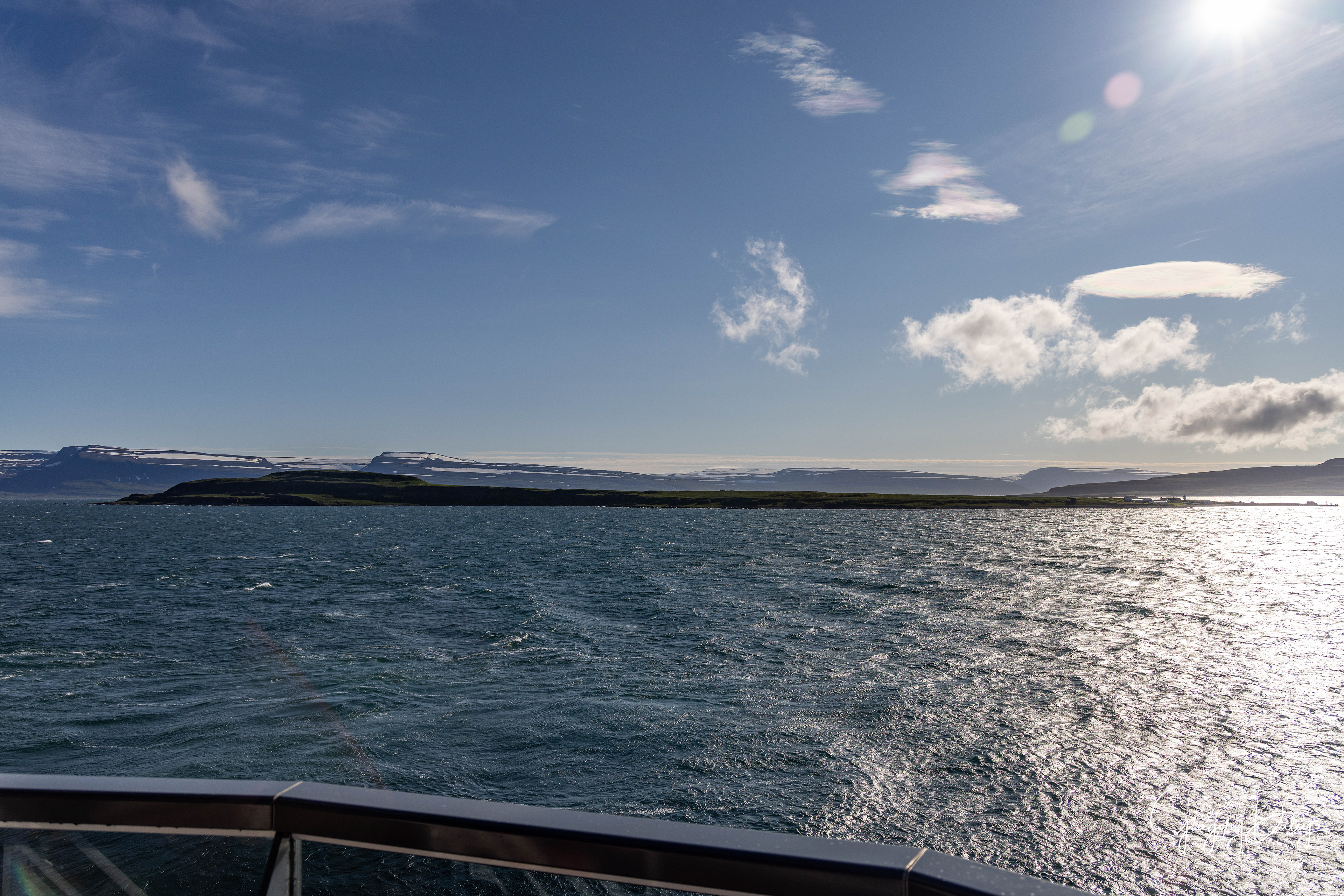
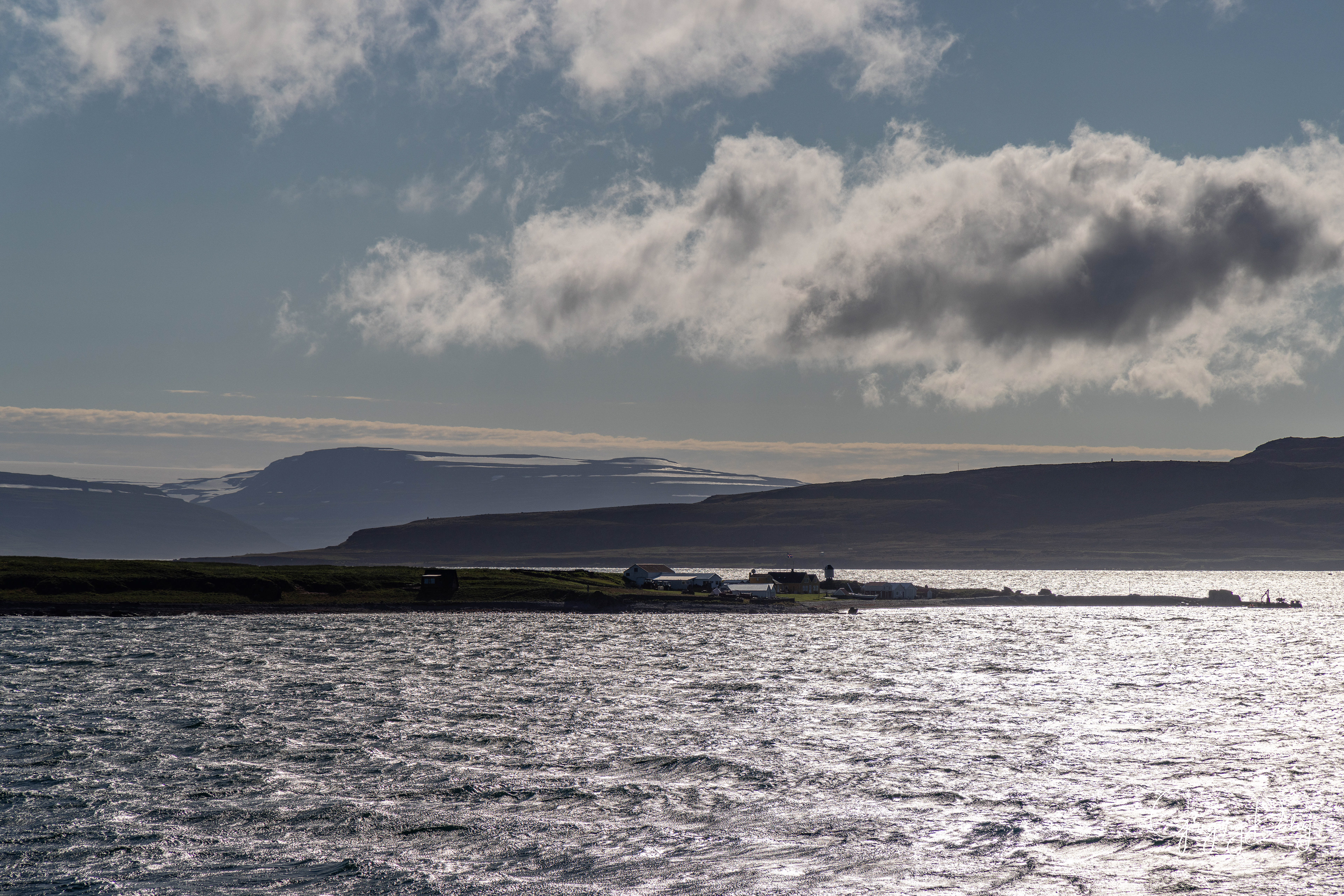
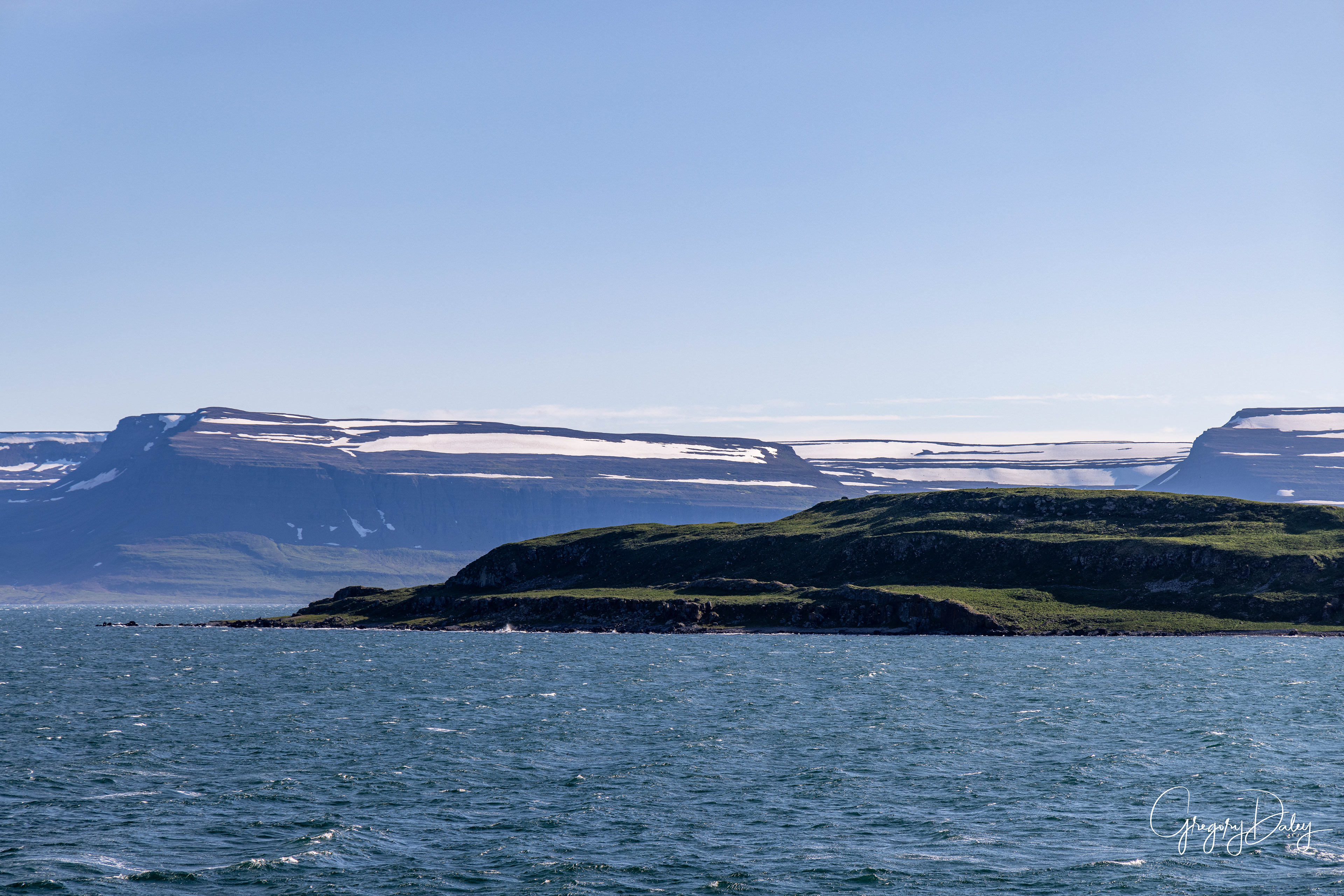
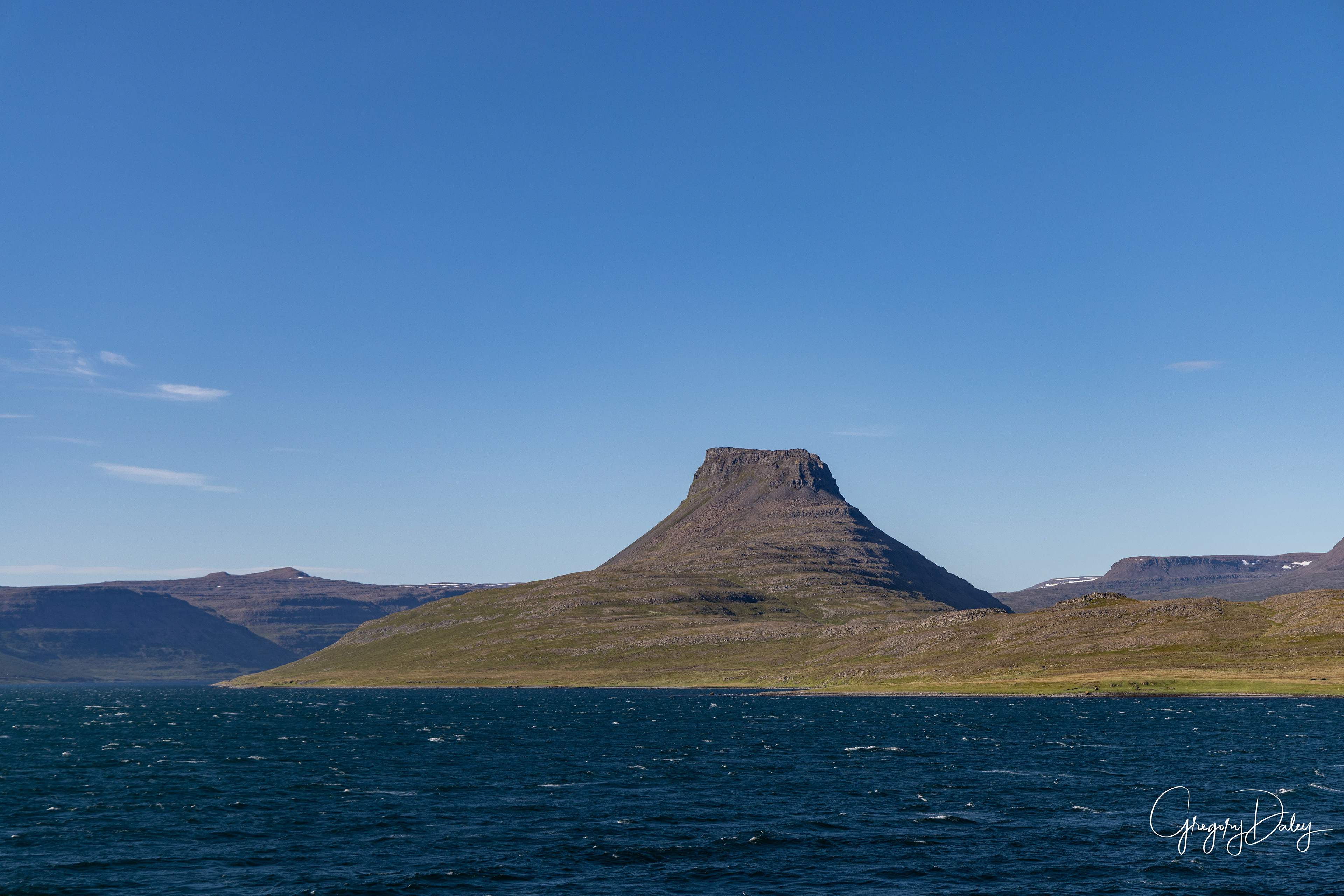
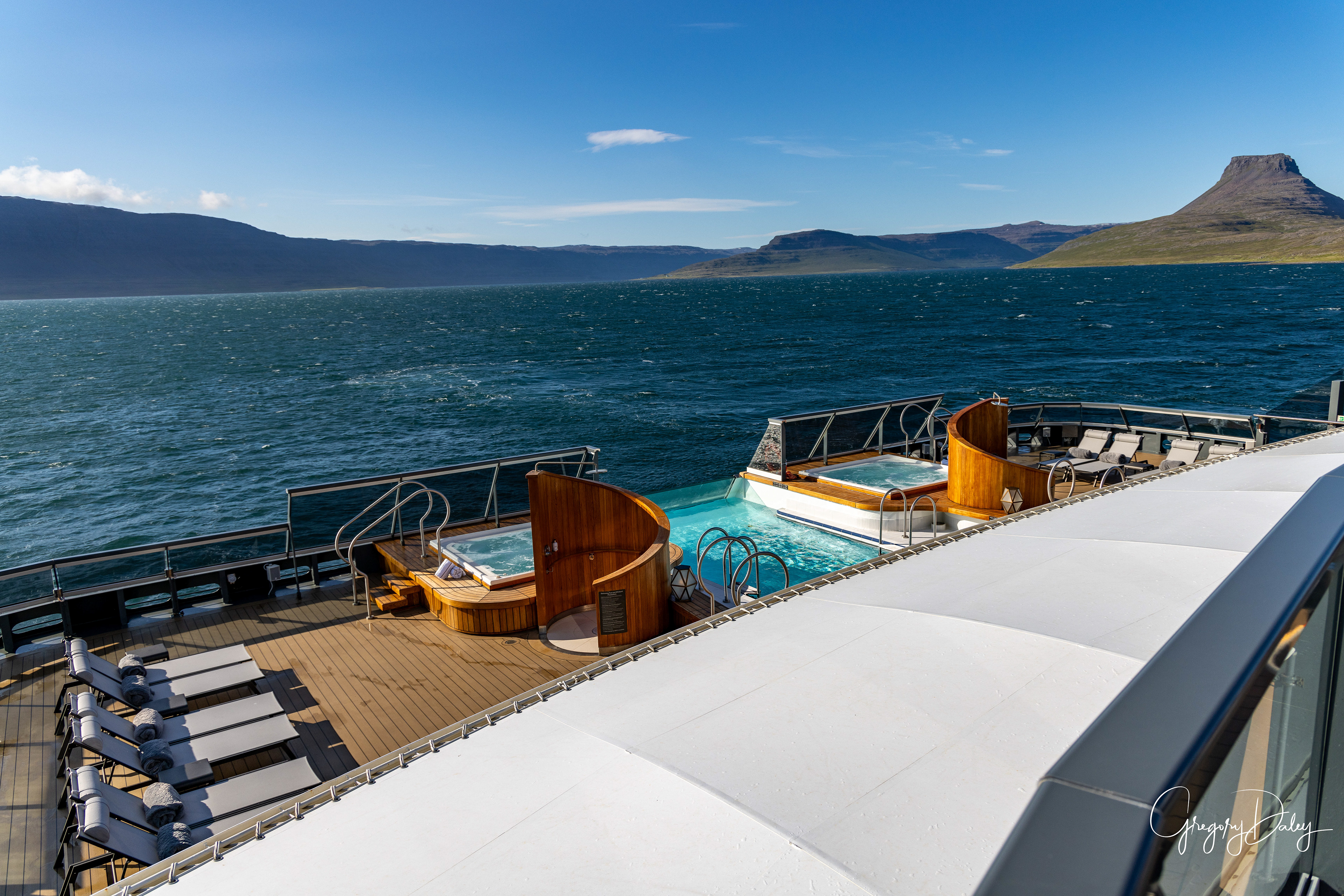


Vigur
Vigur, a privately owned island, is the second largest island of the Ísafjarðardjúp fjord in Westfjords, Iceland. It is a place where time seems to stand still. The family that owns the island bases its livelihood mainly on tourism along with the collection of eggs and eiderdown. The island is home to thousands of birds - eider ducks, eider terns, puffins and more.
The plan was to take zodiacs ashore and see an abundance of birds in their natural habitats. However, the weather did not cooperate. The wind made zodiac operations a bit risky and the rain made the whole thing a bit chilly. The zodiac shore trips were cancelled.
Located just south of the Arctic Circle, the island is around 6,600 ft in length and 1,300 ft in width. The island is most noted for its thriving seabird colonies—particularly Atlantic puffins —traditional eiderdown production and historical buildings.
The two story Viktoriuhús, built in 1860, is one of the oldest timber buildings in Iceland and is part of The Historical Buildings Collection of Þjóðminjasafn Islands. Iceland's oldest seaworthy boat, Vigurbreiður, is also on Vigur.
Today, there is only a single farm located on Vigur. In the seventeenth century the farm on Vigur was home to Magnús Jónsson, a wealthy man who collected and commissioned manuscripts. The first reference to Vigur in the written record is 1194 but it may well be referenced earlier than that under a different name.
A windmill, built in c. 1840, is also located on the island. It is the only surviving historic windmill in the country and possibly the northernmost windmill in the world.
Each year around 3,500 nests of the Common Eider are found on Vigur. The nests are lined with Eider Down which is collected by the farmer once eggs have hatched and chicks vacated. The Eider Down is dried, sorted and cleaned by hand using methods passed down through generations.
Vigur is home to one of the largest puffin colonies in Iceland as well as a rare colony of Black Guillemot. It also hosts vast numbers of Arctic Tern and other Arctic seabirds.